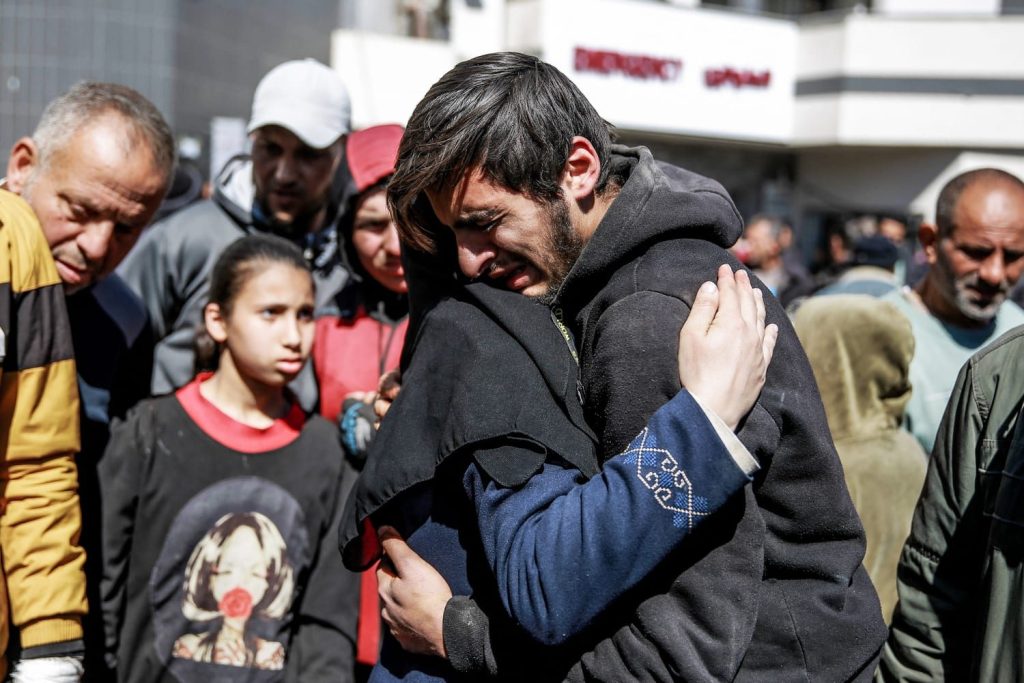Gaza Aid Site Shooting Sparks Global Outrage as Death Toll Rises
Israeli forces have once again opened fire at an aid site in southern Gaza, killing at least three and injuring over 30 civilians seeking emergency food supplies before sunrise.
Global outrage is mounting, with the UN demanding an independent probe, as accusations of forced displacement and deliberate targeting continue to shadow Israel’s military actions in the besieged territory.
At least three Palestinians were killed and more than 30 others wounded on Monday morning after Israeli forces opened fire yet again at an aid distribution point in Gaza. The incident occurred just after sunrise in the southern part of the besieged enclave, at the same location where another shooting had taken place just a day earlier. Witnesses and local health officials confirmed that the latest round of gunfire targeted civilians desperately seeking humanitarian assistance.

Al Jazeera’s correspondent, Tareq Abu Azzoum, reporting from Deir el-Balah, described the situation as increasingly alarming, stating, “The Israeli military opened fire on civilians trying to get their hands on any kind of food aid without any kind of warning.” He added that international aid organizations have consistently condemned these attacks, warning that they have significantly worsened the breakdown of civil order, making it harder for those in need to access life-saving supplies.
The attack, which occurred around 5:30 am near the Flag Roundabout, saw the Israeli military allegedly fire on large crowds who had gathered for aid from the Gaza Humanitarian Foundation (GHF) a group supported by both Israel and the United States. Israeli snipers and surveillance drones were reportedly seen monitoring the area prior to the incident.
Moataz al-Feirani, a 21-year-old Gaza resident, said he was shot in the leg while walking toward the distribution center with thousands of others. “We had nothing, and they were watching us,” he recounted, emphasizing the presence of drones overhead when the shooting began.
The International Committee of the Red Cross confirmed that its field hospital received approximately 50 injured victims, including two who were pronounced dead on arrival. A third fatality was recorded at Nasser Hospital in Khan Younis.
The international community has expressed growing concern over what appears to be a disturbing pattern of violence. United Nations Secretary-General António Guterres called for a full and independent investigation into the killings, asserting that “it is unacceptable that Palestinians are risking their lives for food.” He demanded accountability for those responsible for what he described as repeated mass shootings.
Despite the mounting calls for transparency and justice, the Israeli military denied deliberately targeting civilians. Instead, officials claimed that their forces had only fired “warning shots” at individuals who were allegedly posing a threat. Meanwhile, the GHF also rejected claims that its aid distribution site was the scene of shootings, further fueling skepticism about its neutrality. The organization’s credibility was already under scrutiny after its founding executive director, former U.S. Marine Jake Wood, resigned due to concerns over the group’s impartiality and independence.
Critics argue that the GHF’s operations serve as a political tool to depopulate northern Gaza by centralizing aid in the south, bypassing established international humanitarian agencies. Since Israel partially eased its total blockade, aid has only trickled into Gaza, leaving over two million people still without adequate access to food, water, medicine, and fuel. The UN continues to warn that thousands of children face the imminent threat of death from hunger-related causes.
Meanwhile, the rest of Gaza remains under relentless assault. Airstrikes across the territory have intensified, with at least 51 Palestinians reported killed and 503 injured within the past 24 hours, according to Gaza’s Ministry of Health. In northern Gaza’s Jabalia district, a residential home was hit, killing 14 people including seven children and burying at least 20 others under the rubble. Additional casualties were reported in Deir el-Balah and Khan Younis.
Despite mounting criticism from global leaders and humanitarian agencies, Israel has continued ordering evacuations from southern areas of Gaza, warning that military operations in these zones will be conducted with “great force.” According to data from the “Financial Times”, around 80 percent of Gaza is now either under full Israeli control or marked for forced evacuation. Many Palestinians have been pushed into areas near the Egyptian border that have been described as “desert wastelands,” lacking basic necessities such as clean water, electricity, or functioning hospitals.
Satellite imagery shows Israeli forces clearing land and establishing military installations in evacuated zones, suggesting long-term intentions. Analysts note that the pace of forced displacement has only increased since a temporary truce collapsed in March.
Political commentator Xavier Abu Eid stated, “The Israeli government has been very clear with regards to what their plan is about in Gaza. It is about ethnic cleansing.” His assertion aligns with growing concerns that the civilian population is being systematically displaced as part of a broader geopolitical agenda.
As the humanitarian crisis deepens, calls for a ceasefire and impartial oversight of aid distribution have grown more urgent. With the death toll climbing and essential infrastructure collapsing, Gaza faces a catastrophic humanitarian disaster unless immediate international intervention is mobilized.



